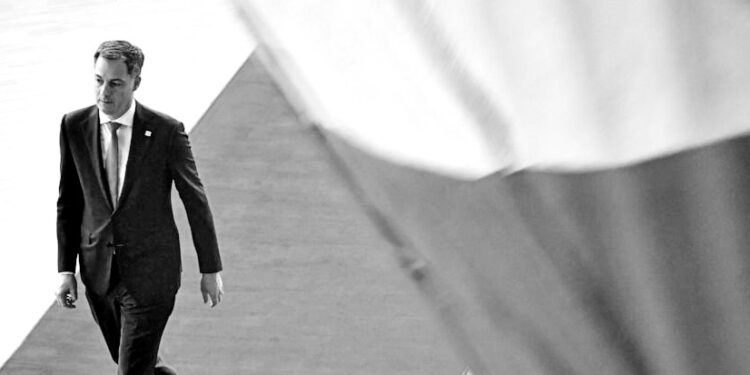European Union leaders are gauging the risk of a banking crisis developing from recent global financial turmoil and hitting an already weak economy
European Union leaders gathered Friday to gauge the risk of a banking crisis developing from recent global financial turbulence and hitting the economy even harder than the energy crunch tied to Russia’s war in Ukraine.
The deliberations by EU government heads in Brussels follow U.S. regulators shutting down two U.S. banks, including Silicon Valley Bank, and a Swiss-orchestrated takeover of troubled lender Credit Suisse by rival UBS.
The emergency actions on both sides of the Atlantic revived memories of the 2008 global financial meltdown and the ensuing EU sovereign debt crisis, which almost broke apart the euro currency now shared by 20 European countries.
“For the moment, we see no reason to be worried,” Belgian Prime Minister Alexander De Croo told reporters on his way to the EU meeting. “But we monitor it really closely, almost on a daily basis, because no one knows what can happen.”
The European economy has been slowing rapidly since Russia invaded Ukraine 13 months ago to the day, leaving the EU flirting with recession. The war has fueled inflation by prompting cuts in supplies of previously abundant Russian oil, natural gas and coal and by denting consumer and business confidence.
The European Commission, the EU’s executive arm, expects economic growth in the 27-nation bloc to slow to 0.8% this year from 3.5% in 2022 and 5.4% in 2021. A projected rebound in growth to 1.6% next year depends on a sound banking sector able to lend to businesses and consumers and protect deposits.
The EU has beefed up its regulation of financial institutions since the euro debt crisis, and little sign has emerged so far of broader contagion in Europe from Credit Suisse’s dramatic rescue.
Nonetheless, financial supervision in Europe remains a patchwork of EU and national authorities pursuing common approaches rather than heeding an actual single European rulebook.
For example, the euro area still lacks a common deposit insurance system, which is widely considered a key defense against future European bank crises. A stalemate among national capitals over how to share risk has left the bloc without this regulatory pillar.
On the market front, officials have said European banks generally have adequate cash buffers — while still urging vigilance.
“I am very confident in the amount of liquidity, the amount of resilience, that our banking system has built up,” said Paschal Donohoe, who leads the group of eurozone finance chiefs and is Ireland’s public expenditure minister. “But we can never be complacent.”
One reason for prudence is that the European Central Bank has raised interest rates from record lows, denting the balance sheets of lenders and making it more expensive for consumers and businesses to get loans. The ECB is seeking to bring stubbornly high euro-area inflation, which was 8.5% in February, closer to a 2% target.
ECB President Christine Lagarde and Donohoe are attending the EU summit to share their views about the economy.
“I’m really looking forward to the discussions with the president of the European Central Bank to understand where we are going and what tools they plan to use in the future — what are the prospects for our economy and inflation,” Estonian Prime Minister Kaja Kallas said.
Source: abcNEWS


Recent Comments